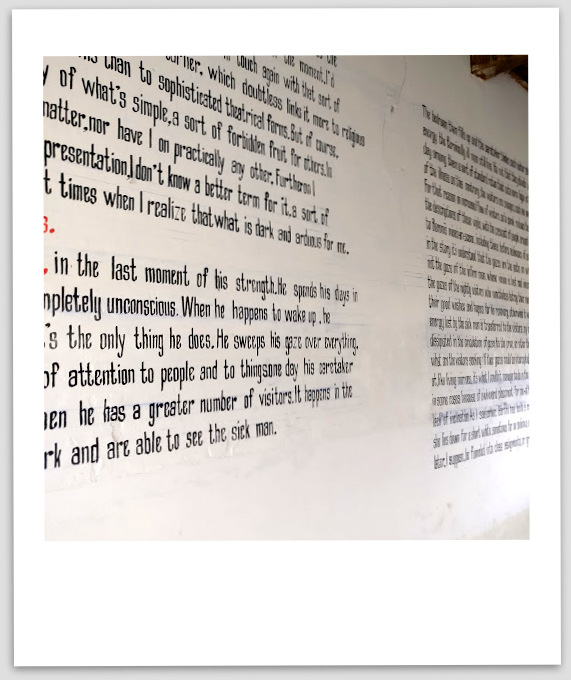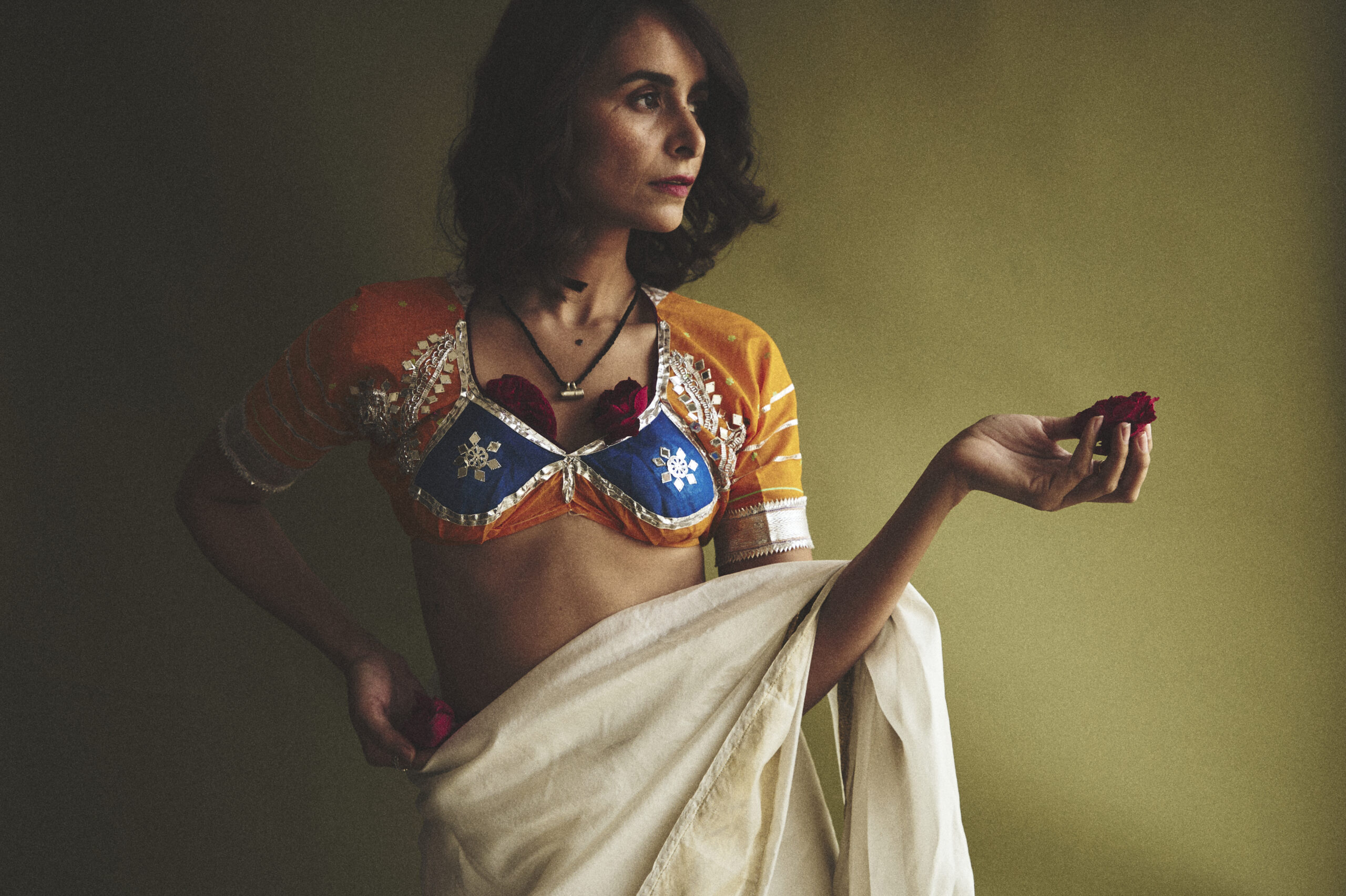The only map you need if you’re visiting the Kochi-Muziris Biennale
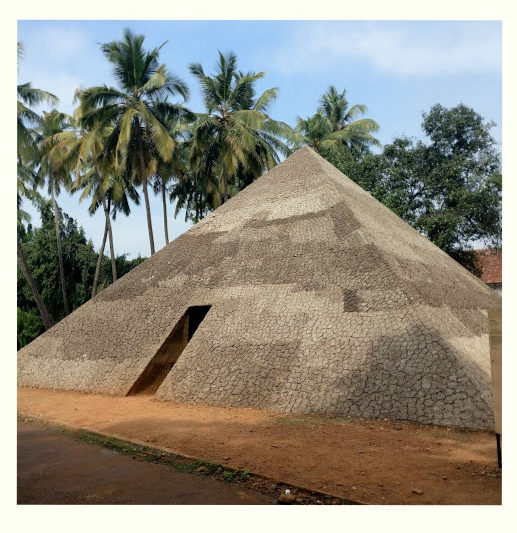
You’re going to the Biennale.
Breathe.

You need to discover it, not catalogue it. It’s easy to run around like a headless chicken, instagramming and hashtagging, because, FOMO.
But let me sum up the harsh reality—seeing everything is impossible. Some halls you might just miss. Some pieces might not catch your eye. Some venues might be closed for lunch (such as Kissa Kursi Ka—The Story of the Indian Chair which remained locked despite banging on the bolted doors for five minutes). And the mugginess is overwhelming.
The Biennale is not a race you want to win. It is a stroll you want to enjoy. We never made it to Darbar Hall, and that gives me even more reason to visit it the next time round. Beej has mapped out the venues you need to see at the Kochi-Muziris Biennale, so that you don’t have to.
1.Aspinwall House: The beating heart of the Biennale, Aspinwall House is a clutch of whitewashed offices, a bungalow, scattered warehouses and random structures wrapped around the coast. This is your first stop where you buy your day ticket or delegate pass, grab the map, and the Kochi edition of Motherland, if any are left. There’s a lot to see; you will need a few hours at least. When you’re done, do stop by at the lovely cafe by the sea to have a glass of freshly squeezed orange juice while you watch boats slip by.
Aspinwall is home to the stars of the literary-heavy Biennale, such as Chilean poet Raúl Zurita’s Sea of Pain. You need to wade through brackish waters in a pit, akin to the desolate shape-shifting universe of Tarkovsky’s Stalker, to read his poetry painted on the other end. Zurita was the first artist (and first poet) to be picked for this Biennale.
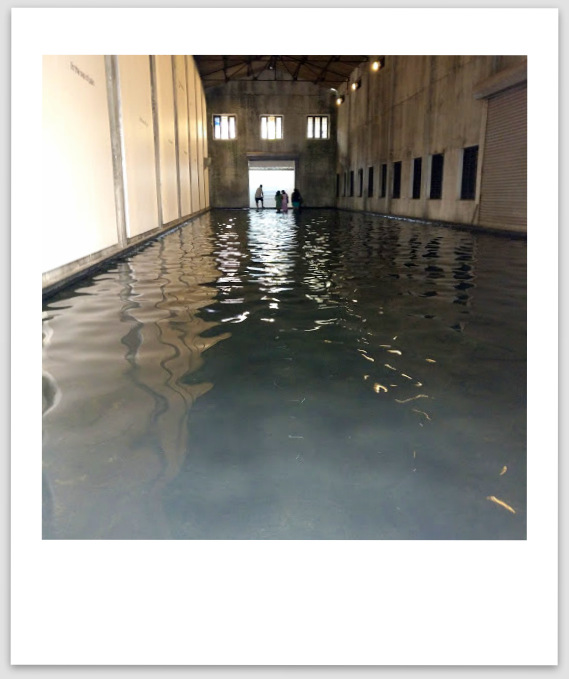
You can’t miss The Pyramid of Exiled Poets by Aleš Štege. Its groping, claustrophobic darkness and narrow pathways left me gasping for breath, and I ran out of the dung and mud structure to see whether the sun had abandoned us or not.
I loved the expansive mural by P K Sadanandan, a WIP in which he used soot from a blemished clay pot which had been on slow burn. But I was most fascinated by the video installations: Taiwanese artist Wu Tien-Chang’s Farewell, Spring and Autumn Pavilions, where a laconic mime sleepwalked through a kitschy universe. Eva Magyarosi’s magical lena 2009 was gorgeous.
But I had the most fun in the rooms housing Orijit Sen’s Go Playces, the puntastic world of Goa’s Mapusa market, Nizam’s Hyderabad and Punjab’s GT Road. Fitting the jigsaw puzzles and tracking down clues with knee-high toddlers was as immersive as art could be.
2. Anand Warehouse: My second favourite Biennale venue, Anand Warehouse is smack in the heart of Mattencherry—a symbol of the industrious Gujarati community which settled down here centuries ago. This stunning barn isn’t completely abandoned—red chillies were chilling in a locked godown. You have to stand on tip toes to see them drying in gunny bags, the perfume wafting through, making your nose crinkle.
Scale segues into art too. Russian artist collective AES+F eye-watering Inverso Mundus, an HD video installation stretched from one end of the stockroom to the other. An absurdist theatre, apocalypse was entertainment here. In the next room were colossal photographs of three dimensional sets by Hyderabadi artist Dia Mehta Bhupal (She has an installation at Aspinwall House—a Swachh Bharat approved toilet)
Up the musty staircase of the warehouse was another revelation, Bharat Sikka’s poignant photo essay on Kashmir, Where the Flowers Still Grow. It was still early and I was the only visitor to this home, with an empty desk, shoes with no feet, and haunting portraits that still gives me goosebumps.
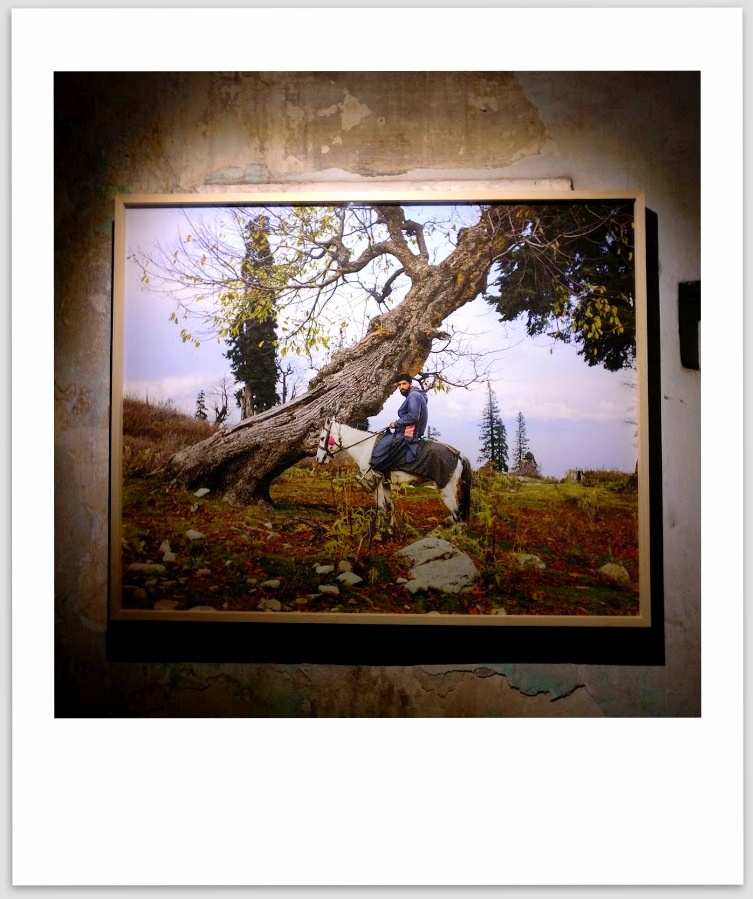
3.Gallery OED: The palpably leafy wonderland that is the Gallery OED compound has a wondrous collection of artworks in the galleries speckled around its breadth, including pioneer women’s cooperative gallery AIR. Artists in Residence’s experimentative works, include Louise McCagg’s cast paper life-masks and Yvette Drury Dubinsky’s maps showcasing multiple generations wandering around the globe. Wander through the entire space which has gems like the Girish Shahane curated Abstract Chronicles.
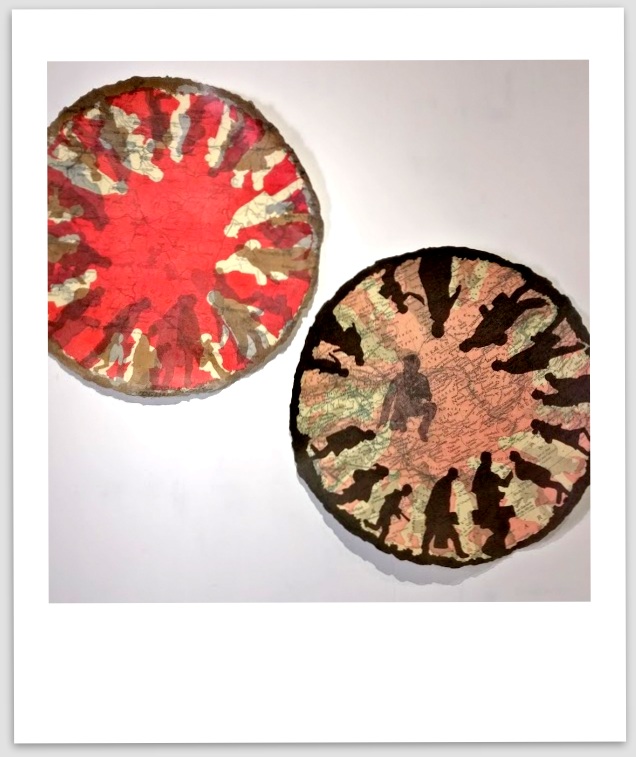
4.David Hall: The food, the swing, the Nico Edit and Saudi-Palestine artist Dana Awartani’s delicately embroidered artwork, ‘Love is My Law, Love is My Faith’ are reasons enough to visit David Hall. Awartani’s piece has been created from cloth frames of different sizes, one swallowing the other, much like those old accordion cameras, instead made out of gossamer fabric.
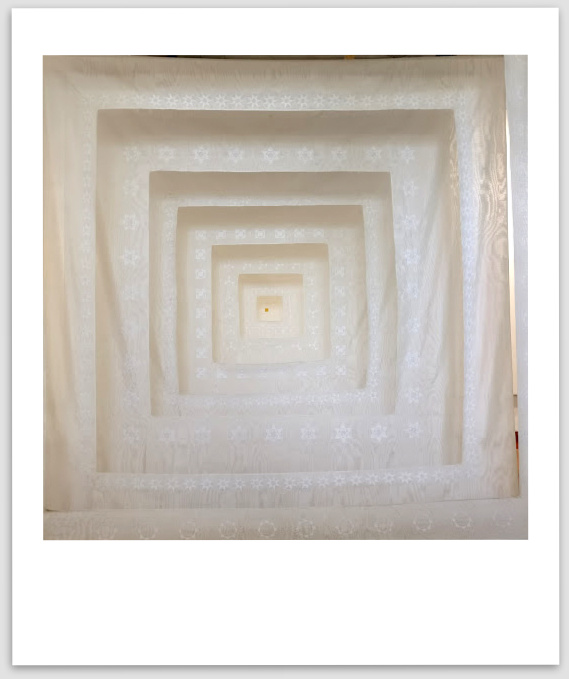
5.Heritage Arts: When you’re wandering through Mattencherry, do stop by the Heritage Art’s antique shop. Not only to sup at the lovely Ginger, but to gawk at the most sublime exhibition by Pichwai revivalist Pooja Singhal. Pichwai Tradition and Beyond reinterprets the traditional art form in modern times, based on themes popular with Shrinathji’s devotees. There are old pieces too; my favourites include the installations of 365 sketches created in accordance to the moon phases.
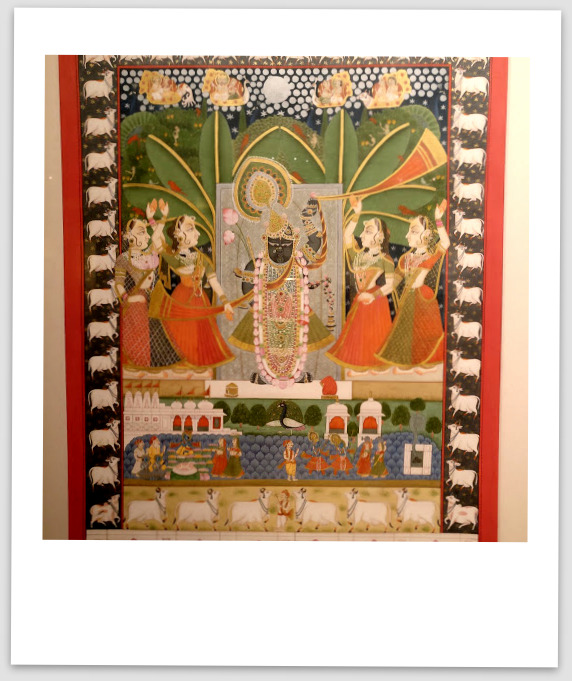
6.Kashi Art Gallery: The entire space of Kashi Art Gallery is taken over by Abir Karmakar’s Home, a photorealistic installation of every middle class home. Godrej cupboards – check. The Milton flask-check. The plastic flowers in a hideous vase-check. I loved it. It felt just like what home used to while growing up.
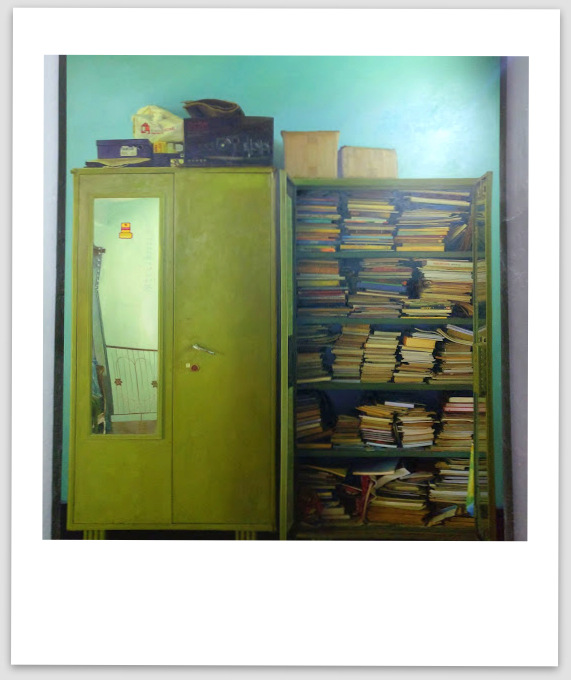
7.Roots/ Routes : Another collateral venue, eight artists from Pune are showing their work at Roots. Loved the colourful fabric assemblages by Vaishali Oak. Do poke your head in the next gallery where Sacha Mendes has curated a girl called _____, showcasing works by seven artists.
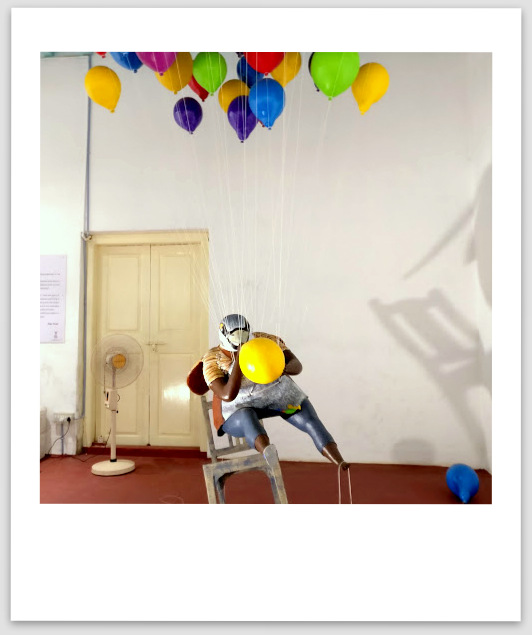
8. Every random wall in Kochi: Under no circumstances will you miss the Engliash language translation of Argentine author Sergio Chejfec’s novel Baroni that’s peppered randomly through the city under a project aptly titled Dissemination of a Novel. It is a tome that is destined to remain unread.
